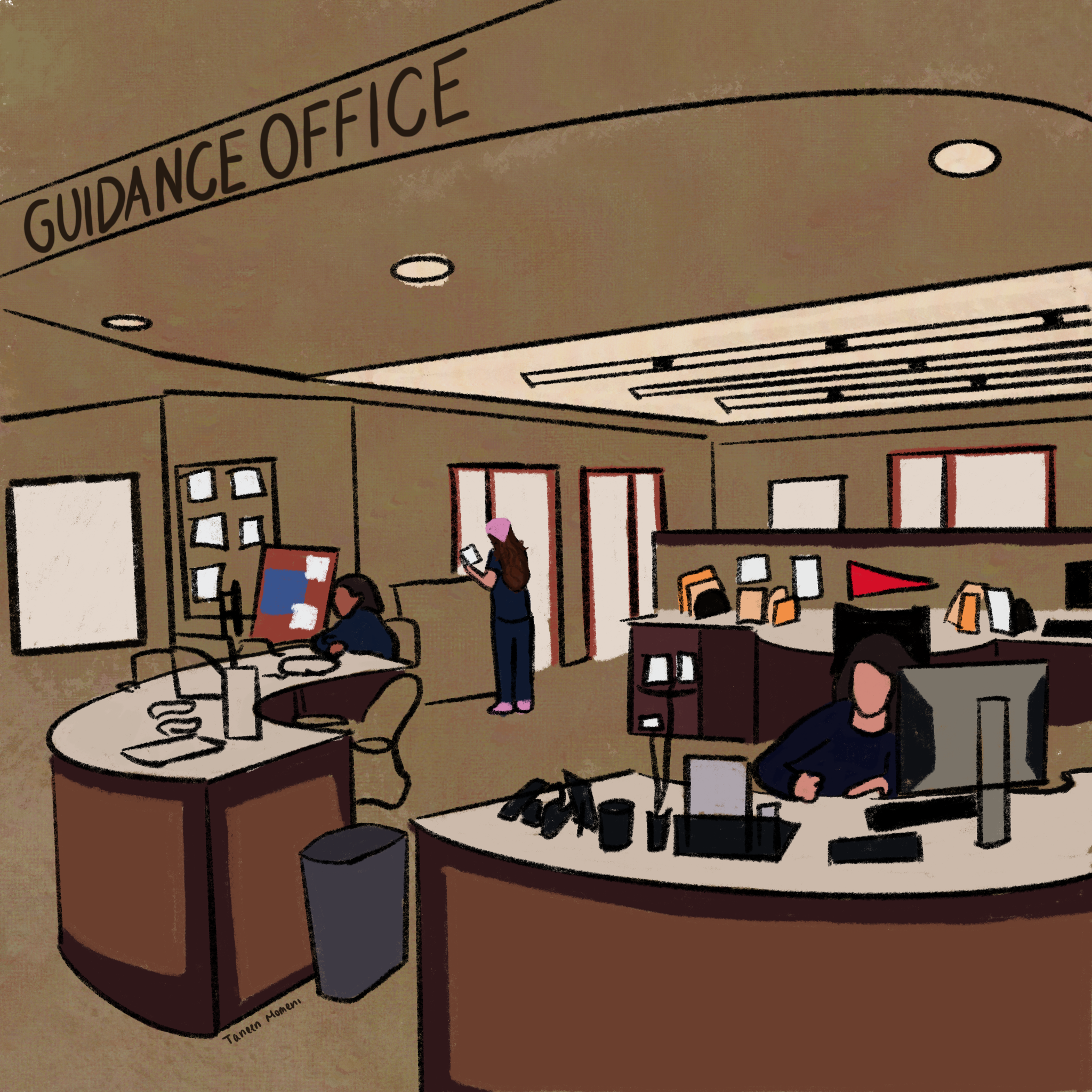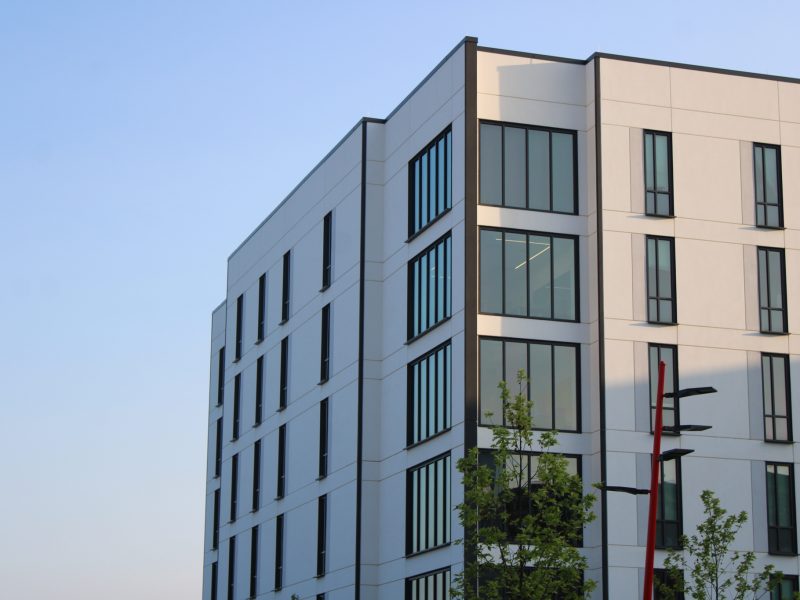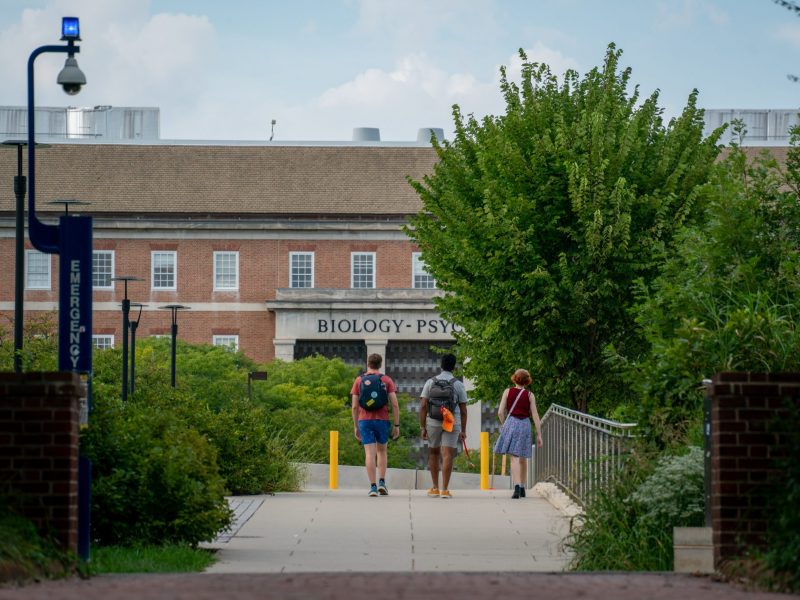While sitting in her high school chemistry class, the day seemed no different than the ones before it, until a text message lit up Luisa Barros-Checcucci’s cell phone. Four months earlier, Barros-Checcucci — a current sophomore neuroscience major at this university — moved to Rockville, Maryland, from Brussels, Belgium.
The text was sent from her then-boyfriend, who still lived in Belgium, advising her to go to the bathroom to talk. Locked in a bathroom stall, tears swarmed her eyes as she learned that a friend died.
Standing in the bathroom for what felt like hours, Barros-Checcucci tried to call her parents but the signal was weak. So she sent them a text, turned off her phone, washed her face and walked back to class 15 minutes later.
After telling her teacher she needed to talk to someone or go home, she was sent to the counseling office. But her assigned counselor wasn’t available because she only worked in the school a few days a week. The receptionist directed Barros-Checcucci to a college advising counselor who was available.
“It was, kind of, like he didn’t have any training,” Barros-Checcucci said. “I was breaking down and he made me feel terrible … He was just kind of like, ‘Okay, well what do you want me to do about it?’”
Schools are crucial providers of mental health services, with up to 80 percent of children in the U.S. who seek help receiving support at school, according to an evaluation published by the National Library of Medicine. But many schools struggle to meet the level of need when it comes to mental health.
The National Association of School Psychologists recommends one licensed school psychologist for every 500 students, but in some states, one psychologist is overseeing 5,000 students. Meanwhile, the American School Counselor Association recommends 250 students for each counselor, but in 2021, the nationwide average was 408 students per counselor.
[Mental health stories beyond UMD: International students discuss mental health experiences]
Last academic year, schools in Maryland averaged 325 students per counselor, according to data reported by the American School Counselor Association. But as access to counselors and psychologists remains limited in certain areas, equipping school personnel with adequate training is vital.
Training improves the ability to recognize signs and symptoms of mental distress and feel confident in intervention with students, according to Samantha Reaves, an assistant professor at the University of Maryland School of Medicine. However, training is not a one-and done-strategy.
“As a psychologist, we have continuing education that we have to do to keep our licenses, so [it’s] the idea that you can always learn more and always be better prepared,” Reaves said.
But access to trained school personnel varies across Maryland, and some schools rely on out-of-school services.
For Barros-Checcucci, who needed support during the school day, she couldn’t shake feeling deprived of the support that she knew she could’ve had at her school in Belgium.
Barros-Checcucci recalls having licensed therapists available on campus at all times in Belgium.
This high accessibility to mental health support meant young people were 95 percent more likely to visit mental health professionals in school than at community centers, according to a study on adolescent use of mental health services across multiple delivery sites published by the Journal of Adolescent Health.
When Barros-Checcucci attended school in Brussels, she remembers friends who would visit the school psychologist twice a week for “little therapy sessions.”
“I had friends who would go with like the slightest thing, like, ‘Hey, I ate food with a texture that I didn’t like today,’ and they would stay there, and it would be fine,” Barros-Checcucci added. “But I didn’t get that when someone literally died.”
Barros-Checcucci’s high school in Belgium was smaller than her high school in Maryland, however, her larger school campus in Belgium — which was comprised of elementary, middle and high schools — offered two licensed therapists at each school.
“We grew up in the school,” Barros-Checcucci said. “So I didn’t have to introduce myself, I just would come [into the counseling office], they know who I am and I knew who they were.”
[Students in South Korea begin to value self-care amid academic pressures]
But after the death of her friend, the lack of support didn’t stop after her disappointing visit to the counselor’s office.
After she missed three days of school, the school office called to inform her that the absences were not excused because it wasn’t a family death. If she didn’t go to school, Barros-Checcucci was in danger of using her five allotted, unexcused absences and would be required to repeat the grade level.
While chronic absences are a national problem that puts more than 6.5 million schoolchildren at risk of falling behind, dropping out of school and facing long-term employment and financial consequences, improving mental health services at school can also create a more positive social climate and combat absenteeism, according to the Robert Wood Johnson Foundation.
Returning to school with only a week-long pass that gave her permission to go to the bathroom whenever she wanted, Barros-Checcucci’s grief doubled as she saw her Belgian classmates excused from school and encouraged to reach out to counselors.
Despite relying on her parents and friends abroad, the lack of support translated to more stress on Barros-Checcucci, who was still adjusting to making friends.
“I was crying, but I was mostly numb,” she said. “I remember thinking, ‘Oh, I don’t need friends. I just need to get through high school’ … I’m not nearly as stressed now as I was in high school, even though I’m a pre-med student.”
In recent years, new policies in Maryland have sought to increase the presence of mental health professionals and access to high-quality care in schools.
In 2021, Maryland passed the $3.8 billion dollar legislation “Blueprint for Maryland’s Future” to improve education over the next decade. Under the “More Resources for Students to be Successful” pillar, the legislation will establish the Maryland Consortium on Coordinated Community Supports to increase access and availability of support for students across the state.
The Maryland Department of Education is also working with the University of Maryland to create a school mental health response program to expand current mental health support through funding and training of school personnel, Reaves said. But ensuring student access to health insurance and early intervention is necessary for improving access to quality care.
“To provide services in a way that families of students can access and respond to means shifting how we spend our money,” Reaves said. “Putting it into prevention and early intervention work and … [being] able to pay the people who are doing that work.”



